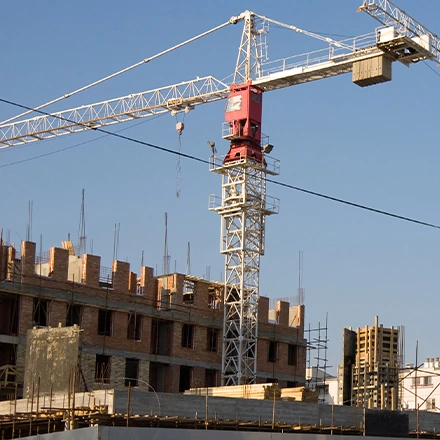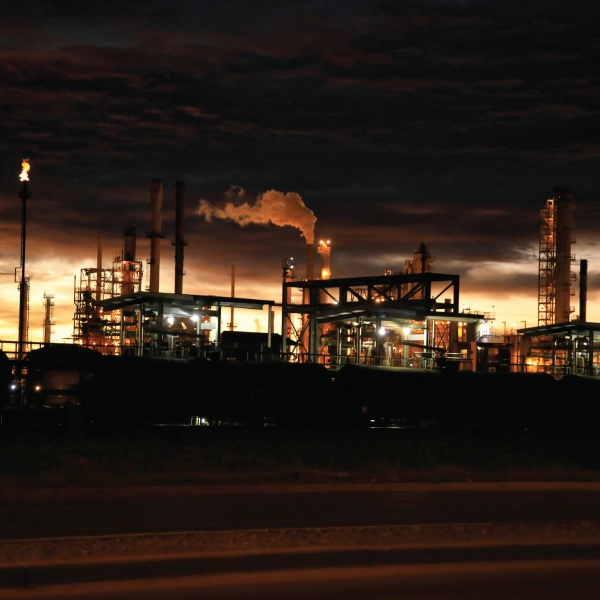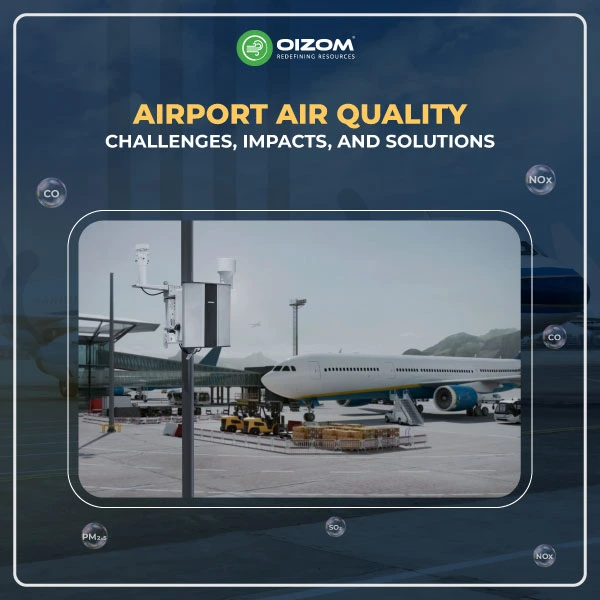Have you seen any neighbours being ‘okay’ hearing there’s construction work going to start near them? No, right? People usually think that construction in their neighbourhood will bring an abundance of dust and a noisy environment. They start losing their patience when their lives, especially their health, are affected by the dust and noise of construction sites.
There have been several cases where the neighbourhood has complained about a construction site and forced them to shut the sites down. Here are a few recent ones:
According to The New York Times, in 2021, residents of troubled supertall tower sought $125 million in damages, citing multiple floods, faulty elevators, “intolerable” noise caused by building sway, and several electrical explosion
In 2022, as per Rio Rancho Observer, Los Lunas homeowners sued a construction company over construction dust
According to The Mercury News, in 2018, Oakland sued the company over alleged dangerous dust blowing into the neighbourhood.
In 2022, according to 21-WFMJ, Lordstown landfill sued for $5M by a neighbour over dust and odour allegation.
Common Damages and Sources of Dust and Noise Pollution on Construction Sites
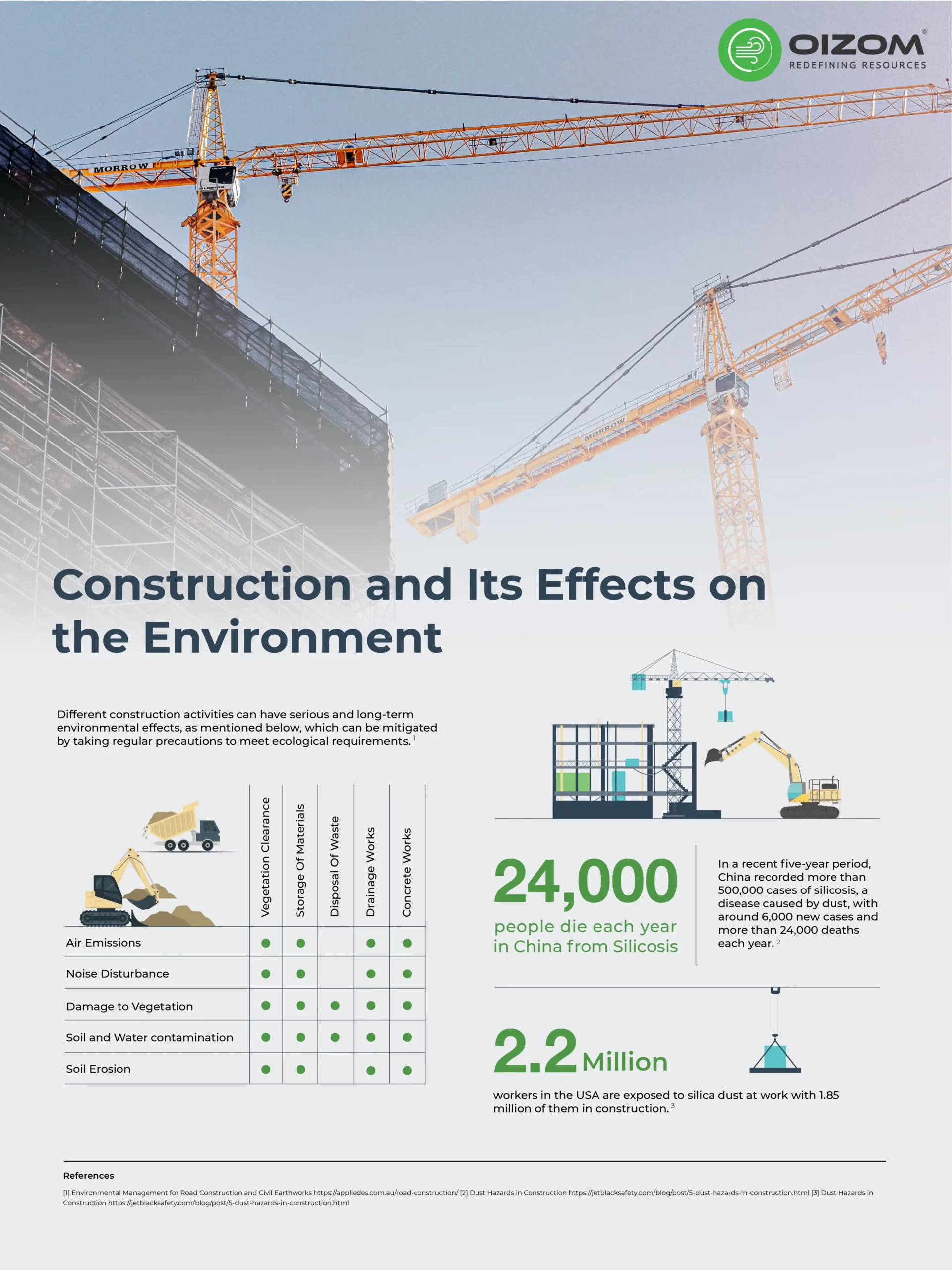
Being aware of the dust and noise pollution sources on construction sites can help take appropriate measures to mitigate them. So, let’s know them first:
Dust Pollution
- Health Effects: Dust pollution can cause various health problems, from irritation of the eyes, nose, and throat to more serious respiratory issues like asthma, chronic obstructive pulmonary disease (COPD), and lung cancer.
- Property Damage: Dust can also damage nearby buildings, vehicles, and other property, especially if it contains abrasive or corrosive materials.
- Environmental Damage: Dust pollution can harm the environment by contaminating soil and water sources, affecting vegetation growth, and disrupting ecosystems.
So, as we move towards a cleaner energy future, we must be mindful of its impact on the world around us. We need to balance the need for minerals with the need to protect our planet.
Sources of Dust Pollution
- Soil Disturbance: Construction activities like excavation, grading, and demolition can disturb the soil, leading to dust emissions.
- Materials Handling: Dust can be generated during the handling and transportation of materials like concrete, sand, and gravel.
- Vehicle Traffic: The movement of heavy vehicles on construction sites can also generate dust, especially on unpaved roads.
- Weather Conditions: Weather conditions, such as wind, can cause dust to spread beyond the construction site.
Noise Pollution
- Health Effects: Noise pollution can lead to hearing loss, tinnitus, and other auditory problems. Exposure to loud noise can also cause stress, anxiety, and high blood pressure.
- Interference with Communication: Noise pollution can make it difficult for workers to communicate effectively, leading to miscommunications and accidents.
- Disruption to Daily Life: Noise pollution can disrupt daily activities, such as sleep and work, for people living near construction sites.
Sources of Noise Pollution
- Heavy Machinery: Construction equipment such as bulldozers, cranes, and pile drivers produce high levels of noise pollution.
- Demolition: The demolition of buildings and structures can produce a loud noise.
- Traffic: Traffic on and around construction sites can produce significant noise pollution.
- Pile Driving: Pile driving, which is used to support structures like bridges and buildings, can generate loud and persistent noise.
In ensuring the best practice of noise monitoring in construction sites, it is essential to address these sources of noise pollution. Implementing effective monitoring measures can help in identifying areas where noise levels exceed permissible limits, allowing for timely interventions to protect both the health of workers and the well-being of nearby residents.
For More Points about Sources of Noise pollution
Why Construction Companies Should Consider Dust and Noise Monitoring
To name a few more reasons I have listed some more considerable ones below:
Compliance with Regulations
Compliance with regulations is crucial for construction companies to ensure the safety and well-being of workers and the community. The Occupational Safety and Health Administration (OSHA) in the United States has established regulations that aim to protect workers against dust and noise exposure. For example, OSHA requires employers to implement a hearing conservation program when noise exposure is at or above 85 decibels averaged over 8 working hours or an 8-hour time-weighted average (TWA).
Recently, in April 2022, Oizom helped Albawani meet the regulatory complainces of Kingdom of Saudi Arabia. Read full-case-study here.
Non-compliance with these regulations can lead to severe consequences for construction companies, including legal penalties, fines, and damage to the company’s reputation. This is where dust and noise monitoring solutions come into play. These solutions help companies monitor dust and noise levels in real time, alerting managers when pollution levels exceed established limits.
Dust and noise monitoring solutions can help construction companies identify potential sources of various pollution. Using these data, construction companies can take appropriate measures to mitigate it and avoid non-compliance penalties. For example, they can deploy dust suppression systems such as misting and fogging systems to reduce dust levels or use noise barriers to reduce noise levels. Additionally, it also creates a safe and healthy work environment for workers while also minimising their impact on the community.
Oizom’s air quality monitoring solutions for construction automate dust suppression methods whenever the dust limit exceeds the input value.
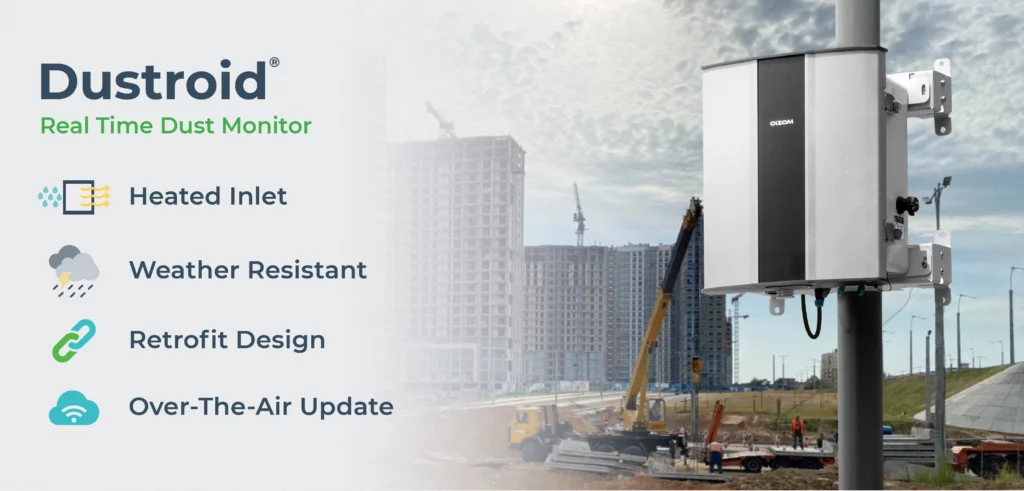
Protecting Workers’ Health
It is crucial to protect the health and well-being of construction workers as they are the backbone of the industry. Ensuring their safety and health is not only a moral responsibility but also a legal obligation for construction companies. Additionally, protecting the health of workers helps to maintain productivity, morale, and positive work culture.
Read real stories of how construction dust is affecting workers’ lives here.
Dust and noise monitoring solutions play a crucial role in protecting the health of construction workers. With real-time dust monitoring data on pollution levels, construction companies can take precautionary actions to protect the health of their workers.
Oizom’s dust monitoring solution can work under severe climatic conditions, which is perfect for getting accurate data even in extreme climates.
Protecting Construction Equipment from Climatic Damage
In addition to protecting the health and well-being of construction workers and the surrounding community, dust and noise monitoring solutions can also help protect construction equipment from climatic damage.
Construction equipment is often exposed to dust and other pollutants in the air, which can cause damage to the equipment’s engine, its longevity, and other components. Exposure to high levels of noise pollution can cause vibration, which can also cause wear and tear on construction equipment.
Dust and noise monitoring solutions can help construction companies mitigate these risks by continuously monitoring pollution levels and taking appropriate measures to reduce dust and noise pollution. This not only helps to reduce repair and maintenance costs but also ensures that equipment is functioning optimally, leading to increased productivity and efficiency on the construction site.
Automation of Dust and Pollution Mitigation Systems
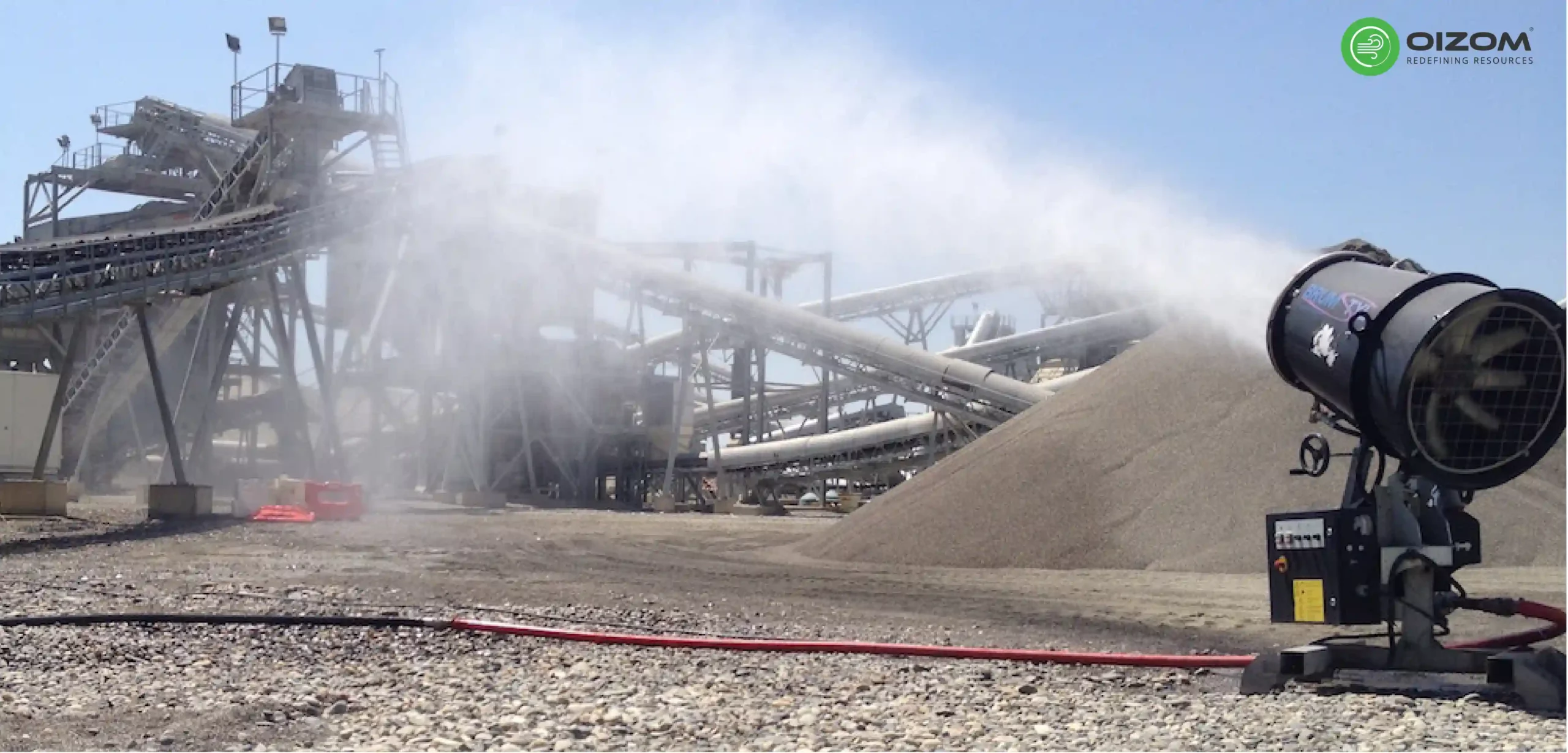
Misting and fogging systems are commonly used by construction companies to suppress dust and other pollutants in the air. These systems work by spraying water or other liquids into the air to capture dust particles, making the air cleaner and safer for workers and the surrounding community.
However, most misting and fogging systems are currently manual, requiring frequent adjustments and refills. This can be time-consuming and labour-intensive, leading to increased costs and decreased efficiency on the construction site. Moreover, manual systems often use more water and other resources than necessary.
To address these issues, Oizom has developed a relay-based automation system that can be used to automate misting and fogging systems. With this system, misting and fogging systems can be controlled remotely, with no need for manual intervention.
The Oizom air monitoring equipment uses sensors to monitor pollution levels in the air and automatically adjusts the misting and fogging systems to keep pollution levels under control. This reduces the need for manual adjustments and refills, leading to increased efficiency and productivity on the construction site.
Additionally, Oizom’s air quality monitors are designed to be environmentally friendly, using minimal water and resources to achieve maximum pollution reduction. This not only helps to protect the environment but also reduces costs associated with water and resource usage.
Increased efficiency, reduced costs, and improved environmental sustainability.
Construction managers can get real-time reports and alerts with our air quality monitoring software – Envizom. They can enable automation processes using Oizom’s relay-based module to set thresholds and automate integrated dust suppression methods from the software. One can even customize our software and endorse their brand just by adding their logo to the application itself.
Enhancing Environmental Sustainability
The construction industry is one of the largest contributors to environmental pollution, with dust and noise pollution being among the most significant environmental impacts. Dust and noise pollution can have serious negative effects on the environment, including soil erosion, air and water pollution, and ecosystem degradation. The importance of preserving natural resources and mitigating environmental impact cannot be overstated, and this is where dust and noise monitoring solutions can help.
Dust and noise monitoring solutions can help construction companies measure and monitor their impact on the environment, including the amount of dust and noise pollution they generate. This data can be used to create strategies for reducing the amount of pollution generated and mitigating its impact on the environment.
One way in which dust and noise monitoring solutions can help reduce environmental impact is through the use of dust suppression technologies, as mentioned above.
Real-time noise monitoring solutions can also help reduce the environmental impact of construction activities. By monitoring noise levels on construction sites, companies can take steps to reduce the amount of noise pollution generated. This can be achieved through the use of noise barriers and sound insulation materials, as well as by modifying construction activities to reduce noise levels.
Reducing environmental impact through the use of dust and noise monitoring solutions can have economic benefits as well. Furthermore, companies can also avoid fines and other penalties associated with non-compliance. And best of all, reducing pollution can help preserve natural resources, such as water and energy, leading to cost savings for the company.
Wrapping Up
Dust and noise are inseparable parameters of construction; however, there are ways to reduce them so they don’t affect the neighbourhood, environment, and health of anyone, including the workers at the construction sites and surrounding communities.
Some of the ways are:
- Install a portable air quality monitoring solution for constriction that can monitor multiple parameters as well as automate dust suppression methods.
- Use equipment with low noise emissions and maintain them properly.
- Enclose noisy activities in sound barriers or curtains.
- Schedule noisy activities for times when they will have the least impact on nearby residents.
- Use appropriate Personal Protective Equipment (PPE) such as dust masks and earplugs.
- Regularly clean and maintain the construction site to prevent the accumulation of dust.
- Use alternative materials and construction methods that generate less dust and noise.
- Establish a communication plan with nearby residents to inform them of upcoming activities and address concerns.
With 30+ Env parameters, Oizom’s compact air quality monitoring equipment comes with an aluminium body. This makes it best for construction and other various industries. Check how Oizom can make construction dust and noise monitoring easy.

